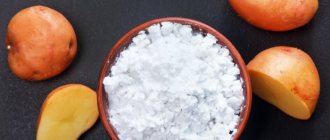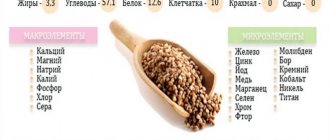How to choose fresh, lightly salted and salted fish
The captured carcasses are cooled. They are sent to processing plants, where they are deep-frozen, salted, smoked, packed in vacuum bags and sent to retail chains.
Often cut into fillets, steaks 2-3 cm thick.
Chilled salmon meat has a soft orange, slightly reddish color.
When pressed, there are no dents left, the flesh is elastic. A fresh carcass has a subtle fishy smell.
Lightly salted or smoked fish is sold by weight or packaged.
Before purchasing, you must check the expiration date of the finished product.
Find out some more useful tips for choosing quality salmon from the video:
Chemical composition, how many calories are in 100 grams, BJU content
Salmon is a unique product in composition; it is rich in polyunsaturated fatty acids, vitamins, minerals, and has low calorie content:
| Content per 100 grams | |||||
| Proteins, g | Fats, g | Carbohydrates, g | Nutritional value, kcal/g | Glycemic index, units | |
| Fresh | 20 | 8,1 | 0 | 153 | 0 |
| Boiled | 19 | 12,4 | 0 | 183,5 | 0 |
| For a couple | 21,3 | 8,2 | 0 | 160,2 | 0 |
| Grilled | 22,2 | 12,3 | 0 | 200,5 | 0 |
| Lightly salted | 19,4 | 7,8 | 0 | 148,1 | 0 |
| Smoked | 22,5 | 12,5 | 0 | 202 | 0 |
| Fried | 21 | 15 | 0 | 197 | 0 |
Amount of essential vitamins contained in 100 g:
- A - 0.04 mg;
- B1 – 0.23 mg;
- B2 – 0.25 mg;
- PP – 9.4 mg;
- C – 1.0 mg.
Mass of minerals in 100 g of product:
- Sodium - 45 mg.
- Potassium - 420 mg.
- Calcium - 15 mg.
- Magnesium - 25 mg.
- Phosphorus - 210 mg.
- Iron - 0.80 mg.
In smaller quantities - fluorine, zinc, chromium, nickel, molybdenum.
Salmon - composition, calorie content and benefits for the body
© Printemps — stock.adobe.com
Salmon (Atlantic salmon) is a popular commercial species of red fish. It is distinguished not only by its exquisite taste, but also by its high content of useful components. There are fatty acids, macro- and microelements, vitamins and a large amount of protein in the complete absence of carbohydrates, which makes the product extremely valuable during weight loss.
A remarkable feature of this fish is that not only steaks are healthy, but also caviar, milk and even the head. In addition, salmon is loved for its protein content not only by girls who want to remove a couple of centimeters from the waist area, but also by male athletes who simply need to restore muscle tissue after training.
Red fish has shown itself wonderfully in the cosmetic field: creams with caviar moisturize the skin and prevent the process of premature aging. Salmon is also used for medicinal purposes to prevent a number of diseases.
Calorie content, composition and nutritional value
The energy value of red fish depends on the method of preparation of the product, for example, the calorie content per 100 g of raw salmon fillet is 201.6 kcal and varies as follows:
- baked in the oven - 184.3 kcal;
- boiled – 179.6 kcal;
- grilled – 230.1 kcal;
- fish soup from salmon head –66.7 kcal;
- lightly and lightly salted – 194.9 kcal;
- steamed – 185.9 kcal;
- fried – 275.1 kcal;
- salty – 201.5 kcal;
- smoked – 199.6 kcal.
As for the nutritional value of fresh fish, it is necessary to pay attention to the composition of BJU and some other nutrients per 100 g:
| Proteins, g | 23,1 |
| Fats, g | 15,6 |
| Carbohydrates, g | 0 |
| Ash, g | 8,32 |
| Water, g | 55,9 |
| Cholesterol, g | 1,09 |
Proteins, which salmon is rich in, are easily absorbed by the body, and fish oils are incredibly healthy. Due to the lack of carbohydrates, this product will be a godsend not only for athletes and fish lovers, but also for women who want to lose weight, especially when it comes to boiled fish.
© magdal3na — stock.adobe.com
The chemical composition of raw salmon per 100 g is as follows:
| Item name | in the product |
| Iron, mg | 0,81 |
| Zinc, mg | 0,67 |
| Chromium, mg | 0,551 |
| Molybdenum, mg | 0,341 |
| Vitamin A, mg | 0,31 |
| Vitamin PP, mg | 9,89 |
| Thiamine, mg | 0,15 |
| Vitamin E, mg | 2,487 |
| Vitamin B2, mg | 0,189 |
| Potassium, mg | 363,1 |
| Sulfur, mg | 198,98 |
| Sodium, mg | 58,97 |
| Calcium, mg | 9,501 |
| Phosphorus, mg | 209,11 |
| Magnesium, mg | 29,97 |
| Chlorine, mg | 164,12 |
Salmon contains omega-3 fatty acids, which are necessary for a person’s well-being and the full functioning of his internal organs. Fish contains a large amount of iodine, a deficiency of which leads to poor health, decreased immunity and depression.
Useful properties of salmon
The benefits of red salmon fish for human health are varied:
- Melatonin, which is part of fish, preserves youth, as it directly affects the process of cell rejuvenation. In addition, it helps get rid of insomnia.
- Systematic consumption of lightly and lightly salted fish in small quantities has a positive effect on the process of losing weight, saturating the body with minerals during a diet, and replenishes the required amount of protein for athletes.
- Brain function improves, concentration and attentiveness increase. The result is possible even if you simply eat fish soup from the head, since it contains almost the same range of useful components as the carcass.
- The functioning of the cardiovascular system improves and the risk of developing heart disease is reduced. It is for this reason that salmon simply needs to be included in the diet of athletes.
- Regular consumption of the product improves immunity due to the rich content of vitamins and minerals in fish, normalizes the functioning of the nervous system, and tones blood vessels.
- Thanks to fatty acids such as omega-3, cholesterol levels in the blood are reduced and metabolism is improved, which plays an important role in the process of losing weight. To achieve the desired results, it is preferable to eat boiled, baked or steamed salmon in small quantities.
- The complex of useful elements contained in red fish helps with ischemia, improving the functioning of blood vessels and the heart. To do this, it is enough to eat one piece of salmon once a week.
Salmon has a positive effect on the condition of the skin and protects it from exposure to ultraviolet radiation. And if a woman not only eats fish, but also makes masks based on caviar, she will moisturize her facial skin and smooth out small wrinkles.
© kwasny221 — stock.adobe.com
The benefits of milk for the body
The benefit of salmon milk primarily lies in the fact that this product, like the fish itself, is rich in omega-3 fatty acids, protein, B vitamins, vitamin C and almost the same set of minerals as salmon fillet.
Beneficial properties of milk:
- prevention of heart disease;
- due to the presence of protamine in the product, consuming milk is useful for diabetes mellitus, as it enhances the effect of insulin on the body;
- brain function improves due to glycine;
- milk is used to treat the nervous system;
- thanks to the immunomodulators included in the fish product, the immune system is strengthened;
- milk promotes the healing of internal wounds and ulcerative lesions, providing an anti-inflammatory effect;
- milk is used in cosmetology, making anti-aging face masks based on this product.
There is a theory that milk has a positive effect on the reproductive function of men, but this has not been scientifically proven.
Salmon bellies
Salmon bellies are not the most delicious part of the fish and are used mainly as an appetizer for drinks. Nevertheless, bellies are rich in vitamins, minerals and have a number of beneficial properties:
- bellies are recommended for women to eat during pregnancy in order to saturate the body of mother and child with useful elements;
- the product reduces the symptoms of psoriasis;
- due to its high omega-3 content, eating salmon in moderation will help prevent obesity, which mainly occurs due to a lack of fatty acids in the body;
- the functioning of brain cells improves;
- bellies reduce inflammation in arthritis;
- used in the treatment of male infertility.
Abdominals can be a great source of energy for athletes before exercise.
Harm to health
Salmon can only cause harm to health if the product is abused, since, like other seafood, red fish is capable of accumulating heavy metals.
Therefore, excessive consumption of fish caught in environmentally unfavorable regions can lead to mercury poisoning.
It is contraindicated to eat salmon if you have an allergy or individual intolerance to the product.
Salted salmon is contraindicated for consumption:
- people with hypertension;
- pregnant women in large quantities due to the salt content;
- with open form of tuberculosis;
- people with kidney disease, also due to salt.
The same applies to eating salted or smoked red fish products.
Note: fried fish in large quantities should not be eaten if you are obese or have heart disease; give preference to baked or steamed salmon.
© Sergiogen — stock.adobe.com
Results
Salmon is an incredibly healthy and tasty fish. Suitable for dietary nutrition, saturates the body with vitamins, which those losing weight are deprived of due to dieting. Athletes need salmon to strengthen the immune system, strengthen the heart, and also as a source of easily digestible protein. In addition, milk, bellies, and caviar of red fish are no less beneficial for men and women than salmon steaks.
Source: https://cross.expert/zdorovoe-pitanie/produkty-pitaniya/semga.html
Useful properties, effects on the human body
A lot of the positive properties of salmon are associated with the presence of Omega-3 polyunsaturated acids in it. The body does not reproduce such acids on its own; it can accumulate them when receiving food rich in Omega-3.
It is important to regularly eat salmon and other types of fatty fish.
The intake of polyunsaturated acids has a positive effect on the functioning of human systems and organs:
- Prevents the development of heart disease, reduces the likelihood of blood clots, which reduces the risk of strokes, Alzheimer's disease, and heart attacks.
- Makes the walls of blood vessels more elastic.
- Has a beneficial effect on the functioning of the nervous system. Mandatory in the diet of people suffering from depressive disorders, vegetative-vascular dystonia and other diseases of the central nervous system.
- Slows down age-related skin aging, improves the condition of the skin with atopic dermatitis and psoriasis.
- Strengthens the immune system. Eating weekly reduces the occurrence of complications during colds.
The vitamins contained in salmon have the following effects on the human body:
- Retinol is important for normal eye function: it prevents vision loss during prolonged exercise, reduces the feeling of fatigue and pain.
- B vitamins are needed for the functioning of the nervous system, skin, and hematopoiesis.
- Ascorbic acid has antioxidant properties. Protects the body from harmful environmental influences. Activates the immune system during the season of ARVI and colds, preventing morbidity during viral attacks.
- Nicotinic acid promotes the expansion of capillaries and improves blood circulation in the brain.
- Vitamin E is actively involved in the production of collagen, which is necessary for skin renewal. Helps with the functioning of the reproductive system, especially in women. Possessing antioxidant properties, it prevents the occurrence of cancer.
- Vitamin D is an essential vitamin for renewing the human skeletal system. Calcium absorption occurs in the presence of sufficient vitamin D. The body is able to produce cholecalciferol when exposed to direct sunlight, but it is easier to obtain this vitamin from food. Salmon is rich in vitamin D, which is easily absorbed.
Contains a number of minerals:
- Potassium is an essential element for the functioning of the heart muscle, nervous system, and skeletal system.
- Sodium is an important substance for the normal functioning of the body, maintaining the acid-base balance for the normal functioning of the enzyme system.
- Phosphorus is responsible for the condition of human teeth and bones.
- Calcium is a microelement that is responsible for the functioning of the muscular and skeletal systems.
- Magnesium is responsible for the functioning of the heart, nervous system, and muscles. It is often prescribed for high mental and physical stress. It has a vasodilating effect and is involved in the separation of bile.
The chemical composition of salmon includes vitamins and minerals that promote better absorption of each other. This makes the product useful for many groups of the population.
Beneficial features
Salmon is a source of complete, easily digestible protein. Fish, unlike other types of meat (animals, poultry), which are more difficult to digest, “gives” amino acids to the body within an hour after the digestion process begins. This makes the product indispensable for those who need to strengthen hair follicles and quickly regenerate skin and muscle tissue. This fish is recommended to be included in the diet of people recovering from operations and injuries, as well as athletes and professional athletes. In addition to amino acids, salmon contains omega-6 and omega-3 fatty acids - the most important nutritional components. That is why this type of fish is included in Hollywood beauty diets [2]. The combination of amino acids and healthy fats helps slow down the aging of the body.
Salmon, with its bright and rich taste, will not harm people with high cholesterol. On the contrary, scientific research confirms that it is beneficial for cardiac patients [3]. In addition, this type of salmon is suitable for those who suffer from diseases of the nervous system, as it helps prevent the development of senile dementia. Vitamins A and E, which are contained in salmon, help strengthen hair and promote its growth, as well as skin regeneration and the normal functioning of the reproductive system. For those women who are keen on low-calorie diets, in order to avoid possible menstrual irregularities, it is recommended to eat salmon at least 2-3 times a week by steaming it.
Atlantic salmon is beneficial for certain skin diseases. This fish, unlike various sources of hydrogenated fats, helps reduce inflammation and promotes acne healing as quickly as possible.
Salmon caviar also has beneficial properties. Its nutritional value is much higher than fish meat. Red caviar contains 22.4% fat and almost 35% protein with a fairly low calorie content - about 199 kcal per 100 g [4]. This product is necessary and extremely useful for nursing mothers and pregnant women. It contains lecithin, which helps remove excess cholesterol from the body. Folic acid, which is part of caviar, prevents the formation of blood clots and takes an active part in the construction of red blood cells, thereby preventing anemia. Its beneficial properties are the same as those of fish meat, only better, since it contains more nutrients and they are more concentrated.
Regular consumption of lightly salted salmon improves mood and brain function, and reduces the risk of developing age-related cognitive impairment. When planning to introduce this fish into your diet, you need to take into account that when fried it loses many of its beneficial properties. That is why lightly salted salmon brings great benefits to the body. But it is undesirable to use it for people suffering from hypertension, obesity and kidney disease [5].
Salmon bellies contain healthy omega-6 and omega-3 acids. The balance between them provides the skin with the ability to withstand solar radiation. To prevent harmful effects from prolonged exposure to the sun, you need to regularly consume this healthy product.
Benefits and harms for men, women, children, pregnant women
It is recommended to consume salmon meat for:
- Pregnant women. Inclusion in the diet has a positive effect on the body of the expectant mother and child. Reduces the possibility of vitamin deficiency during gestation due to the content of vitamins A, B, C, D.
Lightens the load on the cardiovascular system due to the presence of potassium and sodium. Reduces the occurrence of cramps in the third trimester of pregnancy, promptly replenishing calcium and magnesium reserves in the body.
- Elderly. Eating it reduces the risk of heart attacks, strokes, blockage of blood vessels with blood clots, and the growth of cholesterol plaques.
The minerals and vitamin compounds included in the composition, having a positive effect on the functioning of blood vessels, increasing their elasticity, slow down the course of Alzheimer's disease, atherosclerosis, other age-related diseases of the nervous system, and cardiovascular pathologies. - Men. A must-have for anyone involved in sports.
Salmon is a storehouse of substances that are actively involved in the functioning of the muscular system. The presence of magnesium and B vitamins has a positive effect on the functioning of the brain, nervous and vascular systems. - Children should be given red fish with caution. You can try adding it to your diet when you are about three years old.
It will bring undoubted benefits to the body during puberty at the age of 12-16 years: it will reduce rashes on the face, positively affecting the functioning of the sebaceous glands of the skin, and will replenish calcium reserves during the rapid growth of the skeletal system.
Dietary properties:
How many calories are in salmon, what dietary properties it has, all this is of great interest to those who lead a healthy lifestyle and watch their figure. So we will try to answer these questions in the next article.
So here it is:
Like many types of fish, it is rich in so-called fatty acids. But this fish contains the most of them. She is not offended by minerals and proteins that are beneficial to human health.
There are vitamins and unsaturated fats in sufficient quantities. A little more detail about fatty acids, since their presence in food products is very important for human health. Of the fatty acids found in it, the most important is the so-called Omega-3. This compound is credited with the ability to rejuvenate the human body, give a boost of energy and prolong youth. Well, who doesn’t want to prolong their youth? At least a little...
Well, in addition to these very beneficial properties, Omega-3 can reduce the amount of so-called stress hormones, which negatively affect the functioning of the cardiovascular system, causing spasm of the heart arteries. And this is not the only harmful effect of these hormones on the body. They are also responsible for emotional stress, bad mood, and even depressive states. And fish, as a food product, can relieve these undesirable effects, thereby maintaining your health.
In addition to all this, this fish is very useful for people engaged in mental work, as it has a positive effect on the blood vessels of the brain, increasing their elasticity, improving blood circulation, which increases the level of oxygen consumption by brain cells.
It also contains more than twenty very useful macro and microelements, such as chlorine, sulfur, iodine, magnesium, calcium and others. There are also quite a significant amount of vitamins, such as B vitamins, vitamin A, D, C, PP and others.
Is it useful to everyone? Not everyone. After all, there are also people with allergic reactions to fish and seafood. Some people on a diet are afraid of the supposedly high calorie content of salmon, which, by the way, is completely in vain. But people with cholelithiasis and urolithiasis can be harmed by the unsaturated fatty acids contained in abundance. Consuming salmon in excessive quantities may also be harmful to patients with chronic liver diseases and inflammatory processes in the gastrointestinal tract.
Is it possible during a diet?
Salmon is prohibited during strict low-calorie diets to achieve rapid weight loss.
However, it is indispensable with proper nutrition for a long-term weight loss effect.
Does not contain carbohydrates. The polyunsaturated acids included in the composition promote the production of leptin, which is involved in metabolism.
70 g of fish per week can replenish protein, vitamins and minerals in conditions of limited nutrient intake during the diet.
It is not advisable to eat lightly salted or smoked fish. Salt retains water in the body, increasing weight.
It is recommended to include it in the diet after short-term heat treatment: boiled, baked or steamed. This way, more nutrients are retained without increasing calorie content.
Use in cosmetology
Cosmetology companies actively use salmon caviar in the production of creams. It has a more concentrated amount of beneficial microelements and vitamins than meat.
Based on caviar extract, cosmetic products are made for nutrition, skin rejuvenation , enhancing collagen production, and anti-aging skin care lines are being developed.
In home cosmetology, neither salmon nor products made from it are widely used due to their high cost.
What is useful in medicine
Salmon is used to produce medicines to combat diabetes, pancreatic diseases, and hematopoiesis.
It is recommended to use it to prevent vitamin deficiency.
Widely used in prescribing therapeutic diets:
- in the rehabilitation period after exacerbations of cardiovascular diseases;
- for chronic respiratory diseases;
- cerebrovascular accidents;
- diseases of the bone and nervous systems.
If you have chronic diseases, you need to arrange 2-3 “fish days” per week .
Use in cooking
Fish meat is tender and does not require lengthy cooking.
Boiled
How to cook:
- Wash the salmon pieces thoroughly under cool running water.
- Place the fish steak in a container of water, put it on the fire, and bring to a boil.
- Boil for 15 minutes.
- Add salt to taste.
Baked in the oven
Baking is an easy way to obtain tender fish with the most preserved vitamins and minerals.
For baking:
- Fish steaks 2-3 cm thick must be washed.
- Lightly pepper and salt on both sides.
- Place fish pieces on foil sprinkled with vegetable oil.
- Lightly sprinkle lemon juice on top, half a teaspoon of juice for each steak.
- Carefully wrap the foil to cover the top of the steaks.
- Place in a preheated oven.
- Bake for 15 minutes at 180 degrees.
Delicious snack
To create snack dishes, lightly salted or smoked fish is often used:
- Spread soft melted cheese thinly on a thin unleavened sheet of lavash.
- Arrange thinly sliced pieces of lightly salted salmon.
- Roll tightly to form a roll.
- Wrap with cling film.
- Place in the refrigerator for several hours.
- Remove and cut into portions.
- You can decorate by thinly slicing a fresh cucumber and twisting it into a rose shape on each piece of roll.
Salmon - calorie content and nutritional value
> Adviсe
Who doesn't love fish? On any holiday, and not only, fish dishes are a table decoration. And the most “beautiful” decoration is, of course, red fish, or salmon. It is classified among the so-called fatty varieties.
Therefore, many, especially women, have a question: what calorie content does salmon have, and will dishes made from it cause extra pounds? I can say right away: they won’t.
Moreover, boiled or steamed salmon dishes. Well, how is it useful?
Like many types of fish, it is rich in so-called fatty acids. But this fish contains the most of them.
She is not offended by minerals and proteins that are beneficial to human health. There are vitamins and unsaturated fats in sufficient quantities.
A little more detail about fatty acids, since their presence in food products is very important for human health. Of the fatty acids found in it, the most important is the so-called Omega-3. This compound is credited with the ability to rejuvenate the human body, give a boost of energy and prolong youth. Well, who doesn’t want to prolong their youth? At least a little...
Well, in addition to these very beneficial properties, Omega-3 can reduce the amount of so-called stress hormones, which negatively affect the functioning of the cardiovascular system, causing spasm of the heart arteries.
And this is not the only harmful effect of these hormones on the body. They are also responsible for emotional stress, bad mood, and even depressive states.
And fish, as a food product, can relieve these undesirable effects, thereby maintaining your health.
In addition to all this, this fish is very useful for people engaged in mental work, as it has a positive effect on the blood vessels of the brain, increasing their elasticity, improving blood circulation, which increases the level of oxygen consumption by brain cells.
It also contains more than twenty very useful macro and microelements, such as chlorine, sulfur, iodine, magnesium, calcium and others. There are also quite a significant amount of vitamins, such as B vitamins, vitamin A, D, C, PP and others.
[/attention]
But people with cholelithiasis and urolithiasis can be harmed by the unsaturated fatty acids contained in abundance.
Consuming salmon in excessive quantities may also be harmful to patients with chronic liver diseases and inflammatory processes in the gastrointestinal tract.
How many calories are in salmon?
Well, now directly how many calories are in it. After all, this is probably the main question that interests you. So:
The calorie content of fresh salmon is:
140 kcal per 100 grams of product
Proteins, fats and carbohydrates (BJU) of fresh salmon per 100 grams:
As you can see, this is not much at all for such a fatty fish. Most likely, your figure will not suffer from its use. Although, of course, the measure must be observed. However, as with other products.
How many calories are there in this fish, cooked in different ways? And here it is:
Salmon calorie table, per 100 grams of product:
| Product | Calories, in kcal |
| calorie content of baked salmon | 185,7 |
| calorie content of boiled salmon | 189, 0 |
| calorie content of lightly salted salmon | 195,0 |
| calorie content of grilled salmon | 230,0 |
| calorie content of steamed salmon | 197,0 |
| calorie content of salted salmon | 205,0 |
| calorie content of fried salmon | 194,4 |
| calorie content of smoked salmon | 202,5 |
And the nutritional value of this fish, prepared in different ways, is this:
Salmon nutritional value table (BZHU), per 100 grams of product:
| Salmon | Squirrels, gr. | Fats, gr. | Carbohydrates, gr. |
| baked | 19,7 | 12,4 | 0,0 |
| boiled | 22,5 | 12,6 | 0,0 |
| lightly salted | 23,0 | 13,0 | 0,0 |
| Grilled | 21,8 | 14,1 | 0,0 |
| for a couple | 19,3 | 14,0 | 0,0 |
| salty | 22,06 | 14,17 | 0,0 |
| fried | 19,86 | 12,25 | 0,0 |
| smoked | 22,5 | 12,5 | 0,0 |
How is fish good for weight loss?
There are two types of fish that help get rid of fat deposits. These are salmon and tuna. They are rich in protein and contain two fatty acids, which promote the breakdown of subcutaneous fat and “stimulate” metabolism. An excellent option for lunch or dinner is a piece of fish, plus a vegetable side dish. Steamed vegetables are best for this.
Salmon is considered a fatty fish, but due to its low calorie content, it does not harm the figure at all. On the contrary, it stimulates metabolism (due to the amino acids it contains). In addition, due to its high protein content, it satisfies the feeling of hunger for a long time, which makes it possible to avoid snacking on cookies or candy while losing weight.
Of course, you should not abuse it. This fish is rich in protein, so you need to be careful in consuming it daily. Nutritionists advise not to get too carried away and consume no more than 250 grams of it per day.
Recipe? Recipe!
What can be cooked from this fish? Yes, a lot of things. Here, for example, is a recipe for a simple salad:
Salmon salad:
Half a kilogram of salmon. The fish must be cooked and must be cooled to room temperature. Further:
- celery, two stalks
- half a red onion
- juice of one lemon
- olive oil, one tablespoon
- dill
- salt
- ground pepper
First of all, you need to finely chop the celery, red onion and dill. Place the fish on a separate plate. In another bowl, mix chopped celery, onion and dill. Add lemon juice and olive oil here.
After mixing, carefully pour it all into a plate with fish. Add salt and pepper as needed and for taste. Place the finished salad in the refrigerator for half an hour to cool. And that's it, the salad is ready.
More on the same topic:
Not everyone knows that salmon, like all varieties of red fish, have quite strong allergenic properties. Therefore, if you have a tendency to allergic reactions, it is better to try a small piece of salmon first to check.
It is also worth noting that salted salmon is not indicated for people with hypertension, kidney and bladder diseases. And many nutritionists warn that this fish, like any other sea fish, can accumulate harmful substances.
After all, fish often live in polluted waters, where they are caught.
Alena Kravchenko writes,
We sell salmon, but it is artificially grown, not tasty, and even falls apart, but it looks absolutely fresh.
Salmon - composition, calorie content and benefits for the body
Salmon (Atlantic salmon) is a popular commercial species of red fish. It is distinguished not only by its exquisite taste, but also by its high content of useful components. There are fatty acids, macro- and microelements, vitamins and a large amount of protein in the complete absence of carbohydrates, which makes the product extremely valuable during weight loss.
A remarkable feature of this fish is that not only steaks are healthy, but also caviar, milk and even the head. In addition, salmon is loved for its protein content not only by girls who want to remove a couple of centimeters from the waist area, but also by male athletes who simply need to restore muscle tissue after training.
Red fish has shown itself wonderfully in the cosmetic field: creams with caviar moisturize the skin and prevent the process of premature aging. Salmon is also used for medicinal purposes to prevent a number of diseases.
Recommendations for use
Fresh fish is available to residents of the fishing grounds. More often it goes on sale frozen.
After purchasing frozen fish, the carcass or steaks are left in the refrigerator until completely thawed. This way, beneficial cellular juices will remain in the meat.
Whole fish are thoroughly washed, scaled, the head is cut off, gutted, cut into portions or salted whole or subjected to further culinary processing.
Boiling, steaming, grilling, and baking allow you to quickly cook tender meat , preserving all the benefits without increasing the calorie content of the dish. It is recommended to eat salmon with vegetables for lunch or dinner, no later than 3-4 hours before bedtime.
It is advisable for a healthy person to include fish products in their diet 2 times a week, one of which is a fatty variety. The recommended 70-100 grams of salmon will cover half of the body’s daily requirement in proteins.
It is forbidden to consume more than 250 g per day due to the large amount of protein.
How else to cook salmon tasty and healthy, watch in this video:
How to cook salmon
In most cases, the product is consumed salted or smoked. Salmon is also used to make dressings, salads, and rolls. You can even bake pies from it. Fresh fish can be used to prepare delicious fish soup or amazing cream soup.
If desired, salmon can be cooked fried and combined with potatoes or other vegetables. An excellent option would be to cook fried fish with honey. To preserve maximum beneficial properties, it is best to bake meat.
Pasta with salmon
For this dish you need to take the following ingredients:
- 200 g salmon;
- 200 g spaghetti;
- 200 g tomatoes;
- 3 cloves of garlic;
- 2 tablespoons olive oil;
- a little parsley and basil;
- salt and spices.
To prepare this tasty and healthy dish, you need to do the following:
- Chop the garlic and fry it in olive oil.
- Blanch and peel the tomatoes. After that, cut them into cubes and simmer for 3 minutes in a frying pan.
- Cut the salmon into cubes and add to the pan.
- Add chopped herbs.
- Cook the pasta until almost done.
- Place on a plate and mix with cooked fish.
Marinated salmon
For this dish you should prepare the following ingredients:
- 2 cups wine vinegar;
- 2 cups broth;
- 2 cloves of garlic;
- 1 onion;
- Bay leaf;
- fresh cilantro;
- salt;
- peppercorns;
- red hot pepper;
- 1 kg salmon.
To marinate salmon, you need to do the following:
- Boil water with spices for 5 minutes.
- Place the fish in the broth and cook until almost done.
- Add vinegar, herbs and garlic.
- Place the fish in a suitable container and fill with vinegar solution.
- When the composition has cooled, it must be placed in the refrigerator for at least 6 hours.











